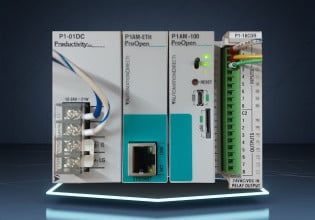Level switch or level transmitter?
- Thread starter hasseli
- Start date
Scroll to continue with content
B
Bob Peterson
Transmitters are relatively inexpensive these days, are often more reliableand more robust than switches, and there is more information available from them than just a switch.
You can also reduce your spare parts inventory and the training your technicians need if you use transmitters in lieu of switches.
In the end, in some plants it boils down to cost of a switch versus a transmitter, and in other plants other factors are more important.
You can also reduce your spare parts inventory and the training your technicians need if you use transmitters in lieu of switches.
In the end, in some plants it boils down to cost of a switch versus a transmitter, and in other plants other factors are more important.
D
Daniel
modern level switches (i.e. vibrating forks) are by far more reliable and maintenance free and calibration free than any level Tx. They will Always switch at the same level, all the time, year after year, when they "touch" the fluid. Software alarms based on a LT are not so dependable. Put an LT and a LS on the same tank and you will see the difference.
W
Walt Boyes
This is an absolute statement, and like most absolute statements, it is just not true. For every instance of an LS working better than an LT, I can give you the opposite. It doesn't help anybody to make statements like this.
Walt Boyes
Walt Boyes, FInstMC, Chartered Measurement and Control Technologist
Life Fellow, International Society of Automation
Editor in Chief, Control and ControlGlobal.com
[email protected]
Walt Boyes
Walt Boyes, FInstMC, Chartered Measurement and Control Technologist
Life Fellow, International Society of Automation
Editor in Chief, Control and ControlGlobal.com
[email protected]
D
Daniel
Ok Walt, maybe I sound too absolute, believe me it was not the idea!
But in my own experience (using and specifying all kind of level technologies, in fluids and solids) , almost all well specified LS will be pretty reliable, and is not the same for LT, even modern ones. I don't like LT based level alarms except for non critic and easy applications.
Regards
But in my own experience (using and specifying all kind of level technologies, in fluids and solids) , almost all well specified LS will be pretty reliable, and is not the same for LT, even modern ones. I don't like LT based level alarms except for non critic and easy applications.
Regards
D
Dave
In my personnel experience its best to have both a Level Transmitter and Level Switch on the process that’s being measured i.e. vessel/separator. (Mounted Separately)
Having a Tx will be provide indication and control, if control is required, also having a switch will provide protection should the vessel reach its High High activation point.
You can take a switching function using a transmitter by taking the two wire transmitter through a trip-amp (pepprl & fuchs) with a double output function, one for high high, the other for low low. This is classed as a dry connection going into the DCS digital O/P card.
I know of one particular vendor which can provided a GWR which allows you to take 2 variable of the Tx. This would allow both indication/control & trip to be achieved from the one instrument. Unfortunately if the instrument fails in service your screwed!
Having both instruments mounted on the vessel offers and increased LOPA should functionality fail on one of instruments....remember bucnfeild!
Having a Tx will be provide indication and control, if control is required, also having a switch will provide protection should the vessel reach its High High activation point.
You can take a switching function using a transmitter by taking the two wire transmitter through a trip-amp (pepprl & fuchs) with a double output function, one for high high, the other for low low. This is classed as a dry connection going into the DCS digital O/P card.
I know of one particular vendor which can provided a GWR which allows you to take 2 variable of the Tx. This would allow both indication/control & trip to be achieved from the one instrument. Unfortunately if the instrument fails in service your screwed!
Having both instruments mounted on the vessel offers and increased LOPA should functionality fail on one of instruments....remember bucnfeild!
R
Ron Davis
Usually using a level transmitter provides you with more information on the tank contents and more flexibility with your control. You don't want to have to move sensors every time you want to change the levels used for control. Much better to do this in software in the controllers.
Still, no level transmitter is 100% reliable so I prefer to have a level switch installed as a secondary backup to prevent overfills.
Ron Davis
Sunapsys, Inc (sun-AP-sis)
850 Third Street
Vinton, VA 24179
Still, no level transmitter is 100% reliable so I prefer to have a level switch installed as a secondary backup to prevent overfills.
Ron Davis
Sunapsys, Inc (sun-AP-sis)
850 Third Street
Vinton, VA 24179
You May Also Like
-

Tutorial: Arduino and AutomationDirect Merged in the ProOpen PLC
-

News from Hannover Messe: Rockwell’s Motor, Drive, and Edge Solutions
-

Turck Releases Next-generation Flow Sensors With Alphanumeric Display
by Bob Odhiambo
-

ABB, GE, and Schneider Electric Launch Solutions for Industrial Sustainability
by Seth Price


